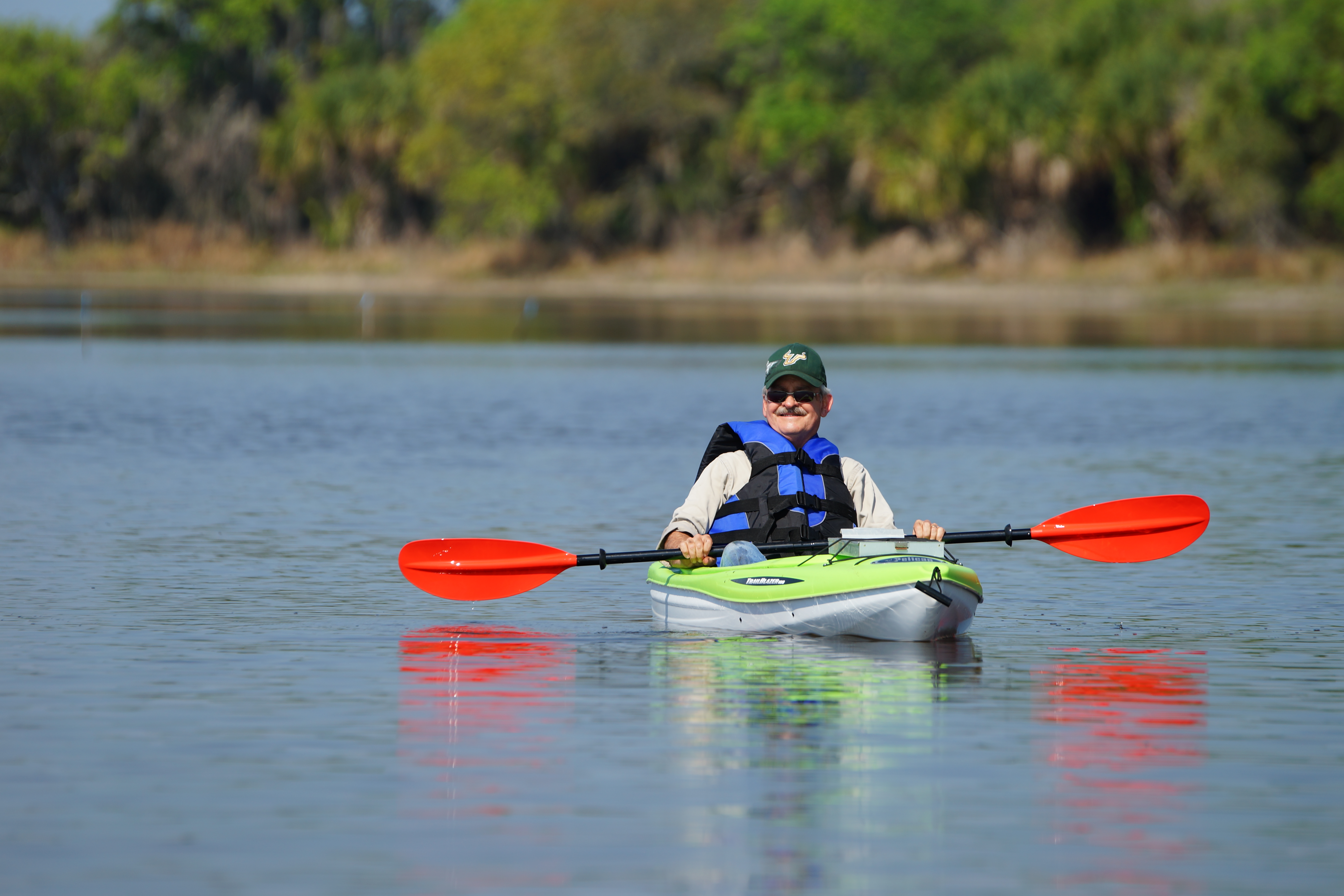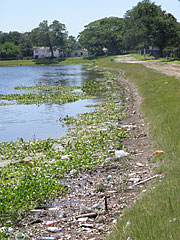
Asking Brandt Henningsen about his favorite project is like asking a mom about her favorite child.
Rock Ponds, of course, because it’s the largest. Or maybe Cockroach Bay Preserve, which included 17 phases over 21 years. But what about Clam Bayou, another decades-long effort in an urban setting? Or the long-term master plan for 7,000 acres in the Little Manatee Corridor? But don’t forget the Fred and Ida Schultz Preserve where an Audubon bioblitz last year documented more than 75 avian species and nearly 50 species of butterflies.
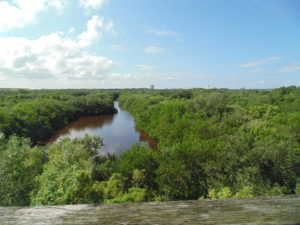
And as he retires at the end of January, Henningsen walks away with one of the nation’s top awards for environmental restoration, the National Oceanic and Atmospheric Administration (NOAA) Fisheries 2018 Dr. Nancy Foster Award for Habitat Conservation. One of just 22 winners over previous years, the award notes that he has demonstrated exceptional achievement and dedication to habitat conservation in the coastal and marine environment.
As a charter member of the Southwest Florida Water Management District’s SWIM (Surface Water Improvement and Management) program, Henningsen served as chief advisor and environmental scientist for the group that has restored more than 4,647 acres of coastal preserves covering 99 separate projects since 1987.
Henningsen also was instrumental in promoting the concept of restoring “habitat mosaics” for the Tampa Bay system, combining native habitats that would naturally occur together, from various estuarine ecosystems to freshwater wetlands that slowly transition to various upland habitats. Those mosaics, he adds, also will make the region’s natural habitats more resilient to sea level rise. “Anywhere we had the space, we planned ways for habitat to move upslope as necessary,” he says.

When he joined SWIM in 1987, Tampa Bay was just beginning to recover from decades of destruction when valuable coastal wetlands were dredged and filled, and wastewater ran straight into the bay. Water quality was improving and the Agency on Bay Management persuaded the Florida legislature to make Tampa Bay a “priority body of water” for its new SWIM program.
“It’s the cohesiveness of the Tampa Bay community that’s made it the environmental success it is today,” he said. “The Tampa Bay Estuary Program, Tampa Bay Watch, corporations like TECO, city and county governments and ‘Joe Public’ have all come together. It’s those ongoing partnerships that have made the difference.”
Over the years, he’s given more than 180 tours of restored sites, and led or participated in 138 events with nearly 2,000 volunteers coming out to transplant more than 63,000 plants on restored sites. An Eagle Scout himself, he’s also worked on eight separate Eagle Scout projects and two Girl Scout Gold Award restorations.
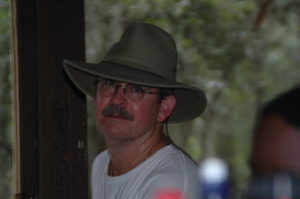
A native of Texas, Henningsen moved to Tampa to earn a PhD in biology at the University of South Florida. His first job was in Collier County, where he thought he’d be monitoring artificial reefs but turned out to be reviewing development plans. He joined SWIM in 1987 and never left.
Winning the NOAA award was the icing on the cake for Henningsen, who was nominated by long-time friend and team member Tom Ries, president of EcoSphere Restoration Institute. “It really was a long shot but we had wonderful support from the staff at TBEP, NOAA and four or five other groups,” Ries said. “Even the NOAA press release mentioned ‘the enthusiastic support’ of local agencies and environmental groups.”
The Tampa Bay Estuary Program will be recognizing Henningsen as a Champion of the Bay for his work within the watershed.

As for retirement plans, don’t expect him to slow down much. “I have at least six months of things that need to be done around the house but no grand plans just yet,” he said. “You can expect to see me at the estuary program and Tampa Bay Watch events. And you’ll see more of me at the Florida Trail Association – I’ve been a member for 15 years, but I’ve never attended a single meeting.”
He’ll also be co-authoring a report on best management practices with Ries as part of the TBEP’s habitat master plan. “Every site has its own unique properties that makes it special,” he says.
Sharing his “boots on the ground” knowledge about restoration – including mistakes made – will help Tampa Bay continue to set the standard for restoration. “We started with a single demonstration project, just 15 by 40 feet of marsh grass south of Port Manatee, and ended up with Rock Ponds, 1,043 acres of diverse coastal habitat,” he said. “I’ve had my fingers directly involved in the restoration of about 2,700 hundred acres – it’s been a great 31 years.”
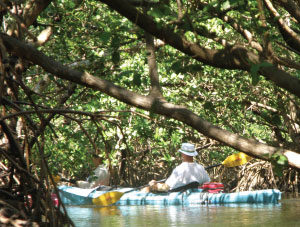
Over the years, Bay Soundings has published multiple stories on the restorations Henningsen has been involved in, as well as a profile written in our Spring 2012 issue.
For some of our favorite restorations, check out:
A story on Terra Ceia Preserve State Park appeared in our first issue while bulldozers were still pushing down thousands of invasive plants. An update was published last year.
McKay Bay is one of the region’s most important habitats for birds – and among its worst toxic hotspots with sediments still containing pesticides that have been banned for decades.
Clam Bayou is a natural oasis at the edge of an urban setting. Henningsen is particularly pleased when he meets walkers on the boardwalk that runs through it who don’t even recognize it as a restoration rather than a natural preserve.
The Fred and Ida Schultz Preserve, sculpted from a piece of land created by dredging nearby flats, is now home to hundreds of species of animals including birds, butterflies, bees, crabs, spiders, mammals, snails and amphibians as well as 141 native plants.
Rock Ponds, once destined to become a nuclear power plant, is now the largest single restoration project in the region.
Cockroach Bay is another of Henningsen’s favorite projects.
Wolf Branch Creek, purchased through the county’s Jan K. Platt Environmental Lands Acquisition and Protection Program, is now an attraction for south county residents. http://baysoundings.com/legacy-archives/fall03/gem.html
A story on SWIM’s 20th anniversary highlights the work done so far.
With nearly 7,000 acres publicly owned by Hillsborough County or SWFMWD in the Little River Manatee corridor, Henningsen helped create a master plan that sets the goals for the next 20 or 30 years.
